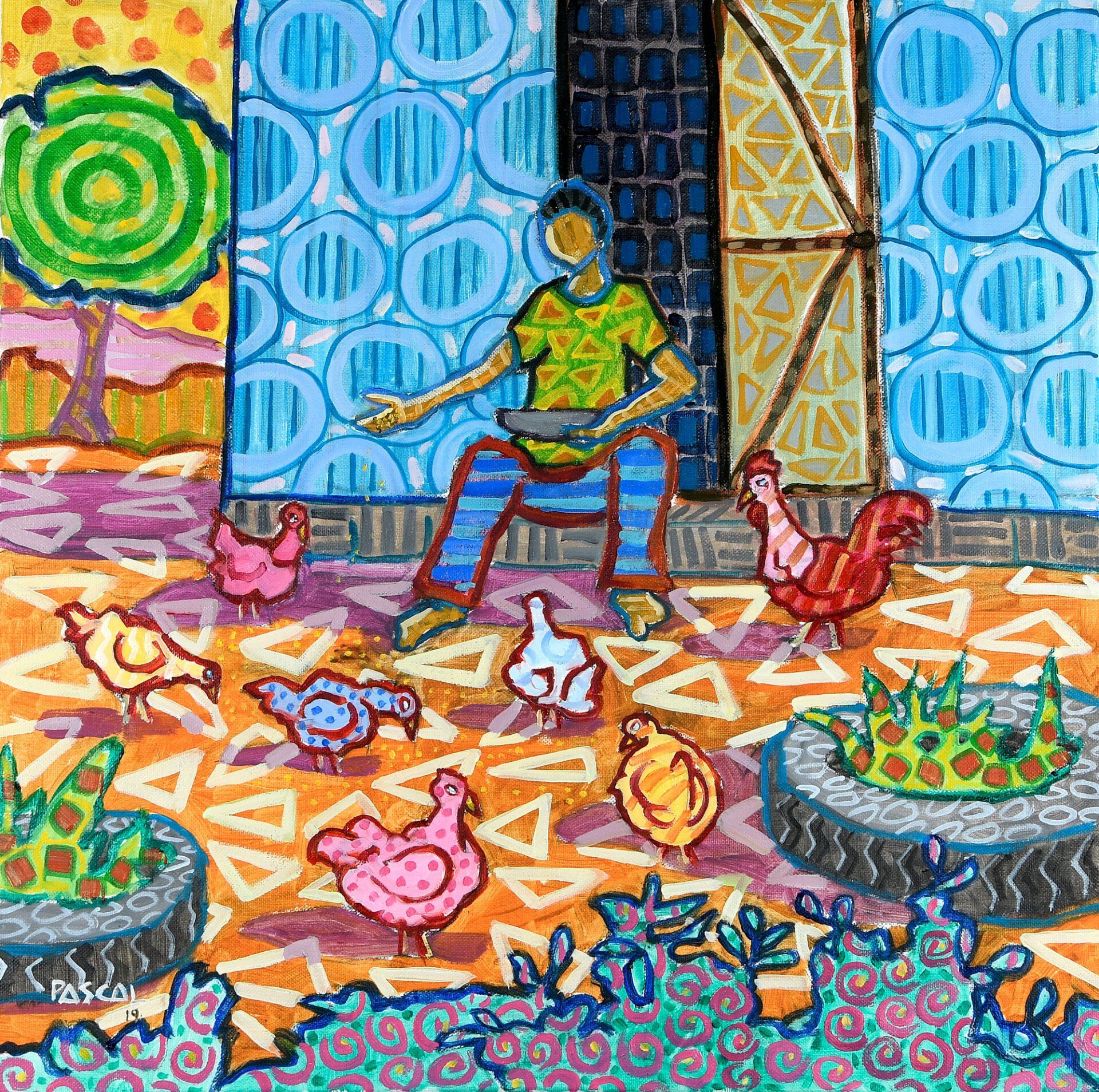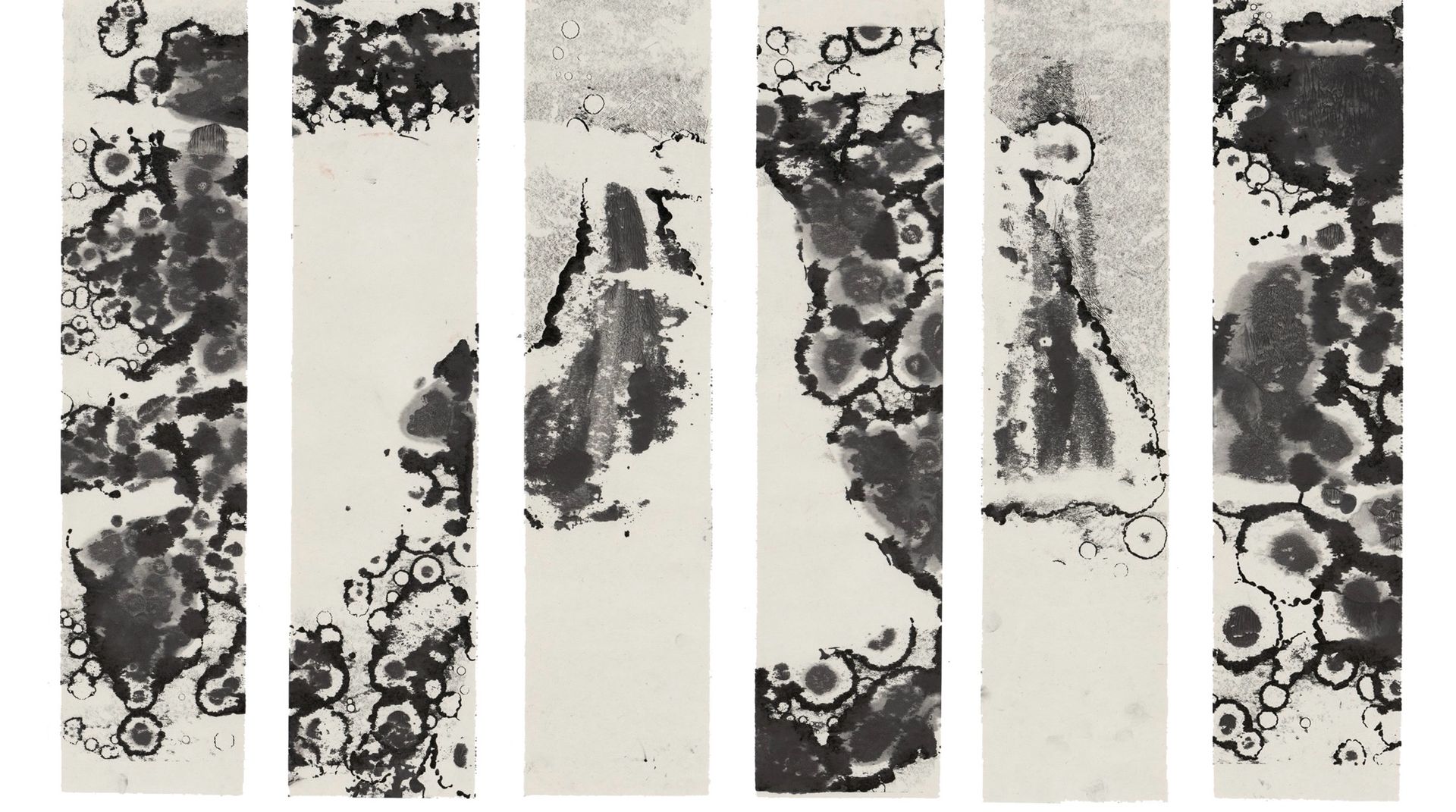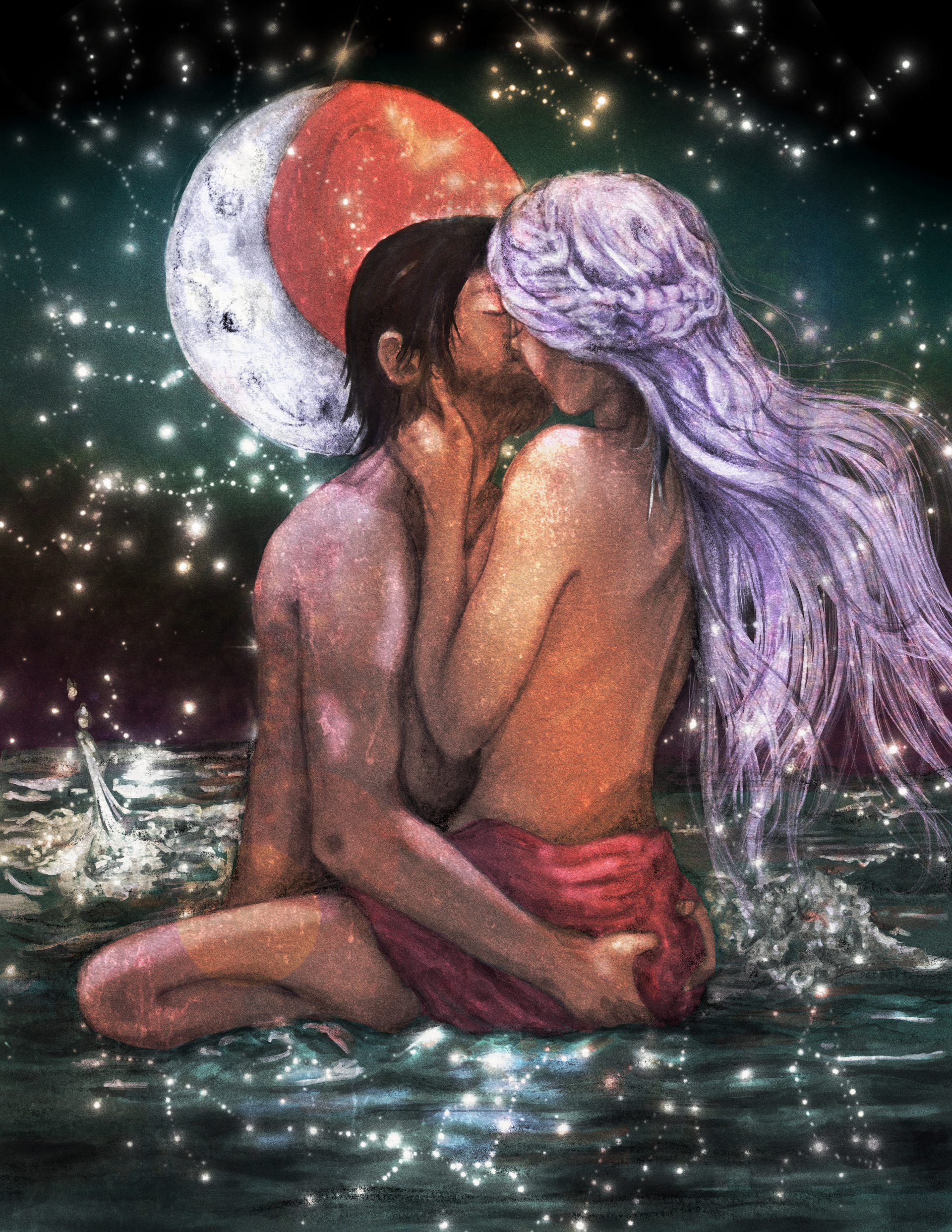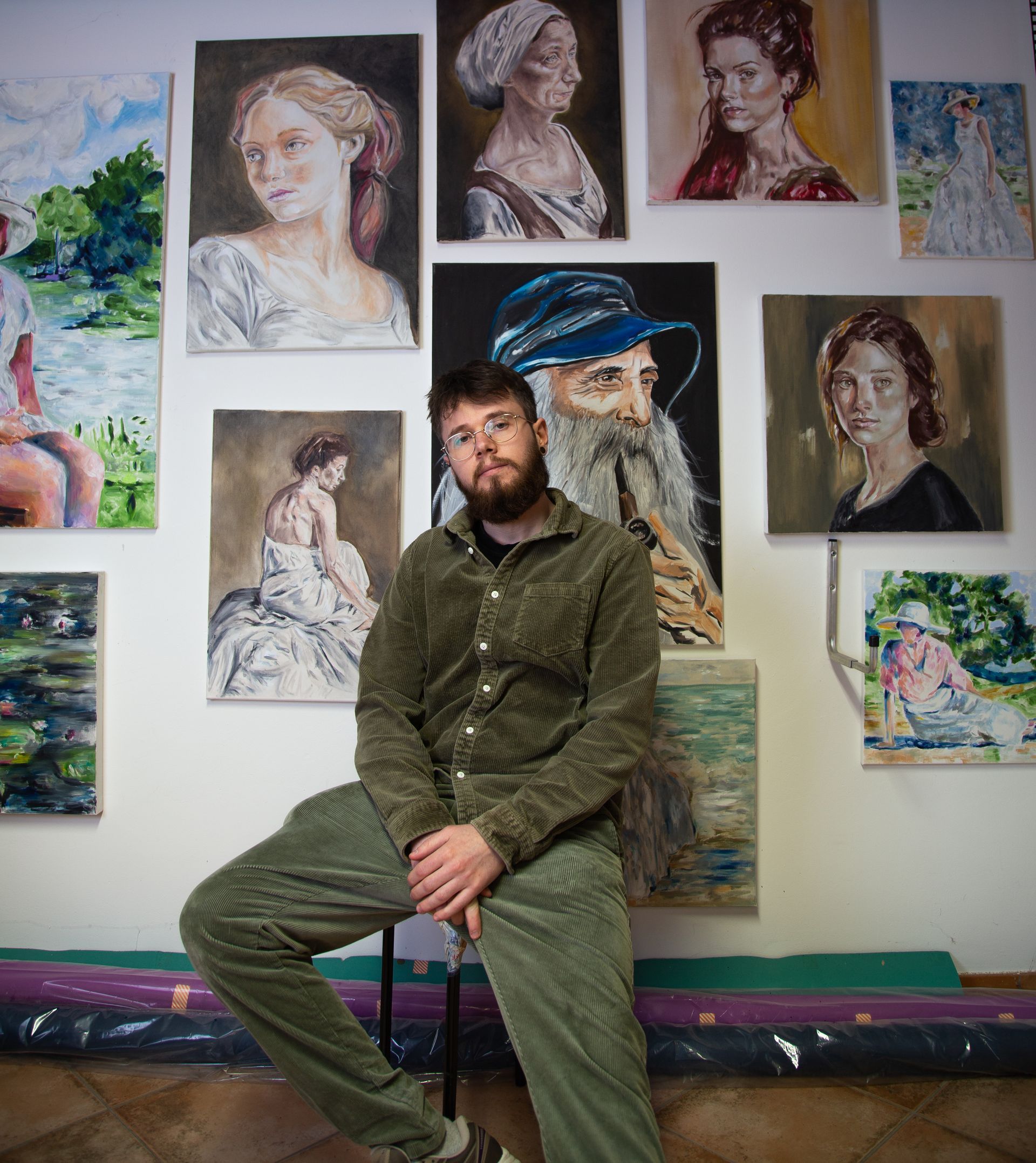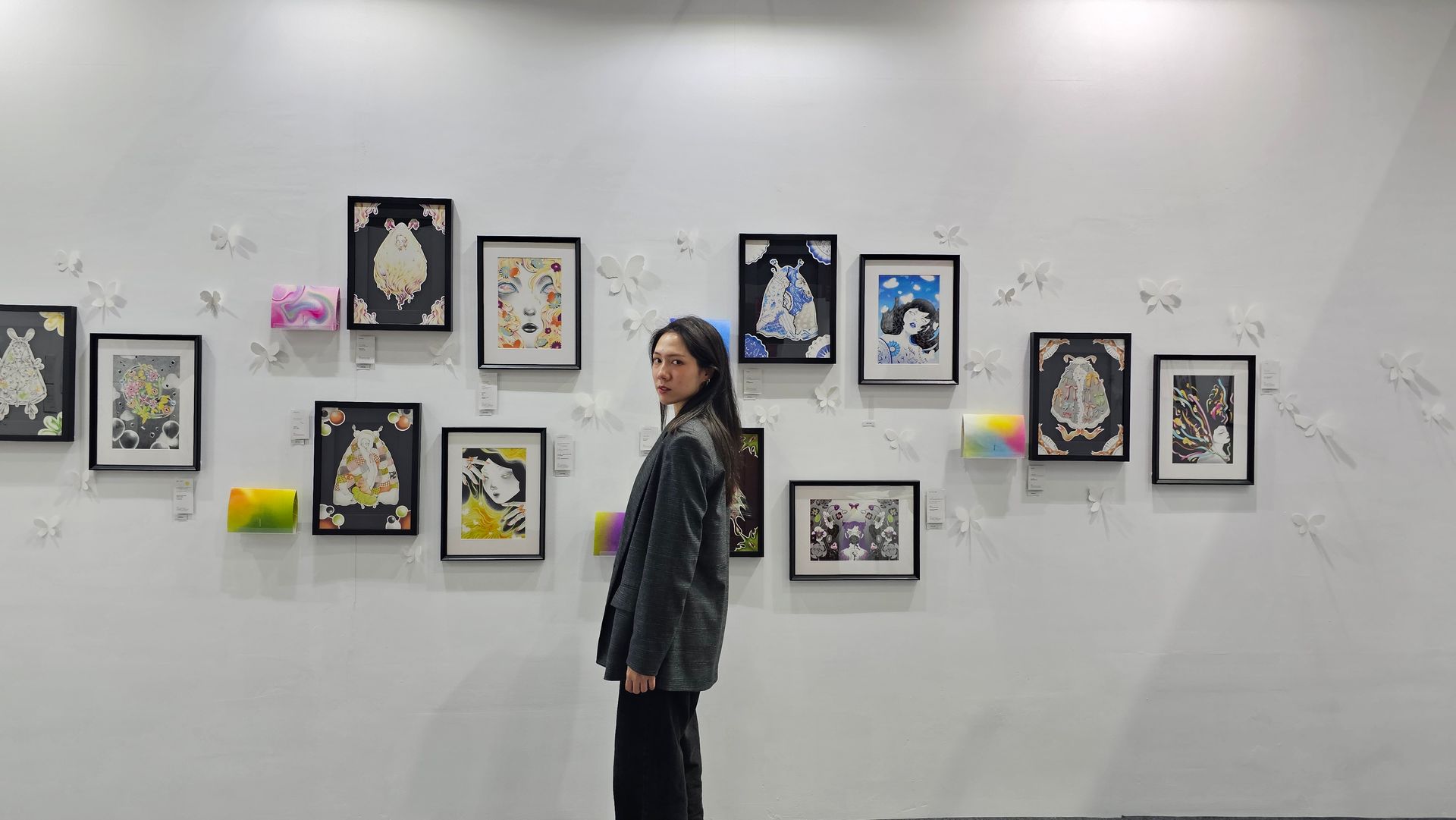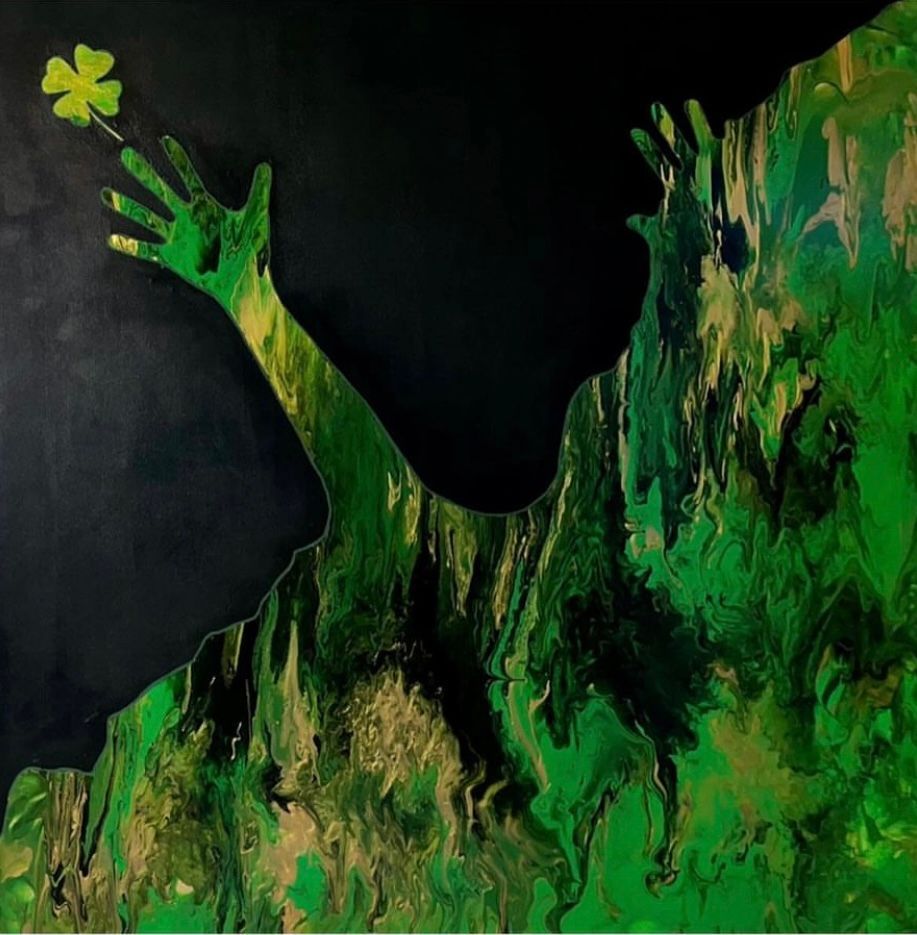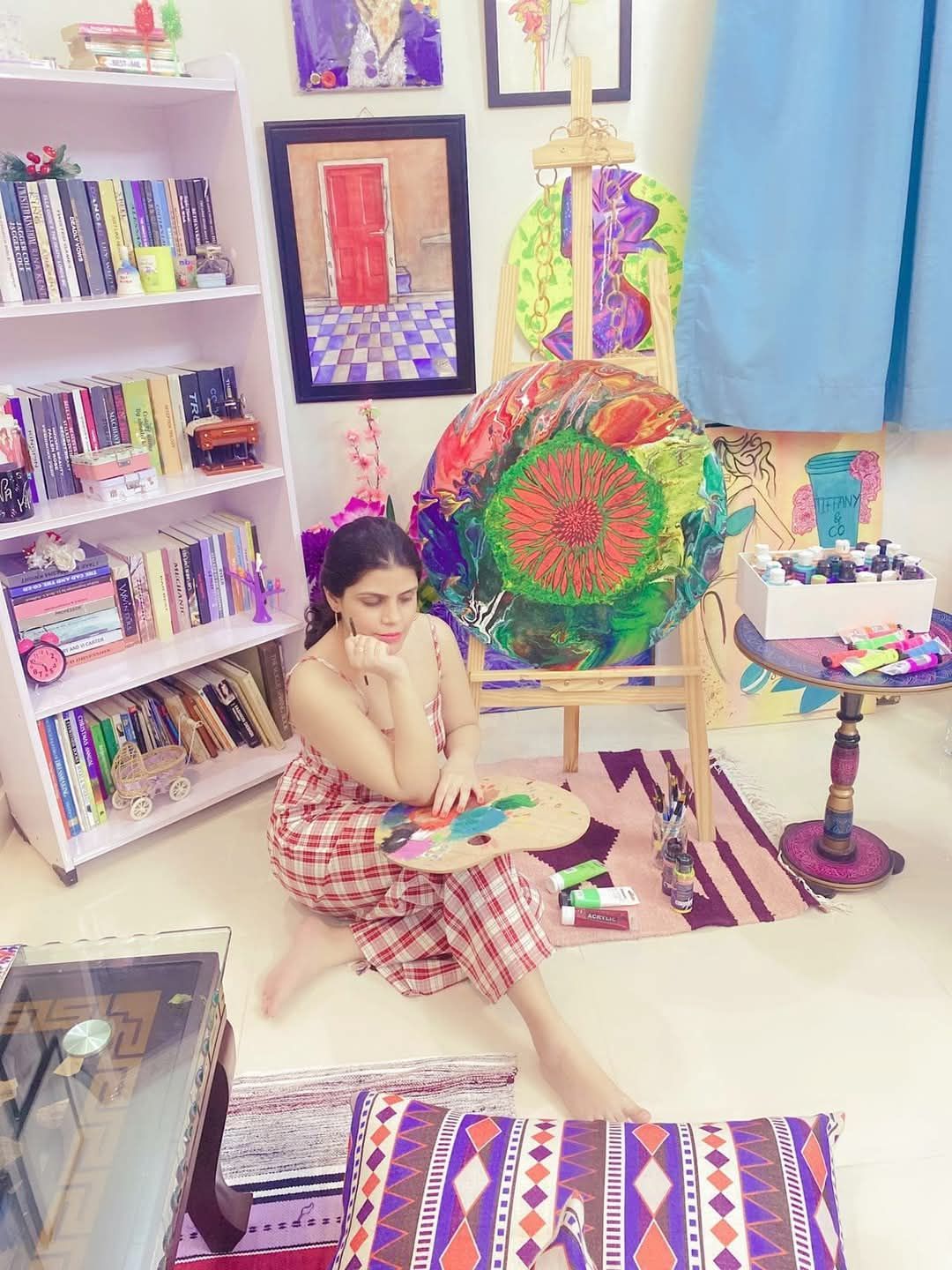Pascal Lagesse, the “Zafer” style

The word “Zafer” comes from the Mauritian creole and is generally used to name something undefined or when one doesn’t know the name of a particular object.
The influence of Van Gogh in the Zafer paintings come from the fact that some of the master’s brushstrokes tended to take geometrical forms. Spirals and circular shapes that can be seen in his painting “Starry night” and the near geometric shapes found in the painting “Flowering meadow with trees and dandelions” challenged me and I asked myself what if these paint strokes were simplified at their fullest? How would such a painting look like? This is how I began painting with circles, spirals, squares, triangles, lines, and dots.
I wanted to see whether the viewer would recognise a landscape, or an object made of graphic signs. I rapidly realised that the use of circles, triangles, squares, or spirals did not hinder the comprehension of the painting and foremost the intention I wanted to convey. For example, a chicken with a dotted texture, a striped texture, or a texture made of triangles did not take away the fact that it was a chicken in the viewer’s mind. In many cases, the addition of graphic textures made a common subject more interesting. In many Zafer paintings I decided to give the viewer graphically complex skies with colours far away from the traditional blue or grey real-life skies. There have never been any doubts in the viewer’s mind that these were skies. Whether a sky was made of giant circles, huge stipes or dots did not affect the overall comprehension of the painting.
One must not see the Zafers as an interpretation of nature or a landscape out of an LSD induced painter’s brain but as a call for beauty. The Zafers are graphic interpretations of a luminous world, a coloured world, a simplified world opposed to the real world we live in. Here, the world is like I would have wanted it to be. I bear an innocent naivety that one can find in my Zafers. Is it the vision of a child refusing to grow up? This celebration of colours and joy denounces our dull and ugly world around us.
